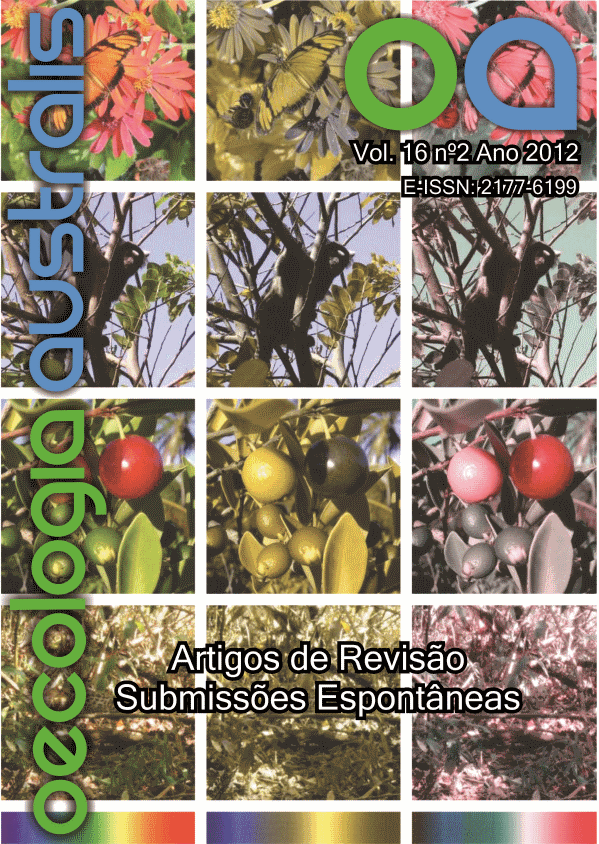BIODIVERSITY CONSERVATION AND SPATIAL ECOLOGY DYNAMICS: EVOLUTION OF THE THEORY.
Keywords:
Island biogeography, metapopulations, landscape ecology, conservation biology, philosophy of ecology.Abstract
The capacity of ecologists to contribute to the solution of environmental problems depends on the understanding of ecological theories that underlie decision-making in conservation and ecosystem management. Therefore, detailed structural analyses of these theories are important to evaluate if they are able to enhance the knowledge about ecosystems and their functions, particularly in terms of their capacity to respond to changes caused by socio economic development. The relationship between the theory of island biogeography, formulated by MacArthur and Wilson in 1963, metapopulations, landscape ecology and habitat fragmentation is an example of how theories can help to understate the effect of environmental impacts over ecossystems. We expose in this essay an analysis of the structural and epistemological content of island biogeography theory in its original format. Next, we address its expansion to other research areas and how comprehension about fragmentation of natural environments have evolved from island biogeography, through metapopulation theory, into landscape ecology. Thus, we show how remnant habitats dynamics began to be better understood as areas under the influence of distinct contexts and environmental histories, and not as isolated oceanic islands. When recommending the application of the ‘expanded theory of island biogeography' for understanding the ecological dynamic of fragmented habitat, we emphasize the importance of structural analyses of the theory that led us to the conception that biodiversity in oceanic islands is the result of the sum of peculiarities set by geological and evolutionary processes. However, those processes lose some relevance in explaining patterns of species diversity in habitat remnants. In this case, it is necessary to use the history, intensity and frequency of human disturbances and the social and economic contexts that motivates it. Equally important is the evaluation of how metapoplation dynamics influences the maintenance of key populations in fragmented landscapes. The integration among ecological theories and historical, social and economical contexts is critical for the success of more sustainable and consistent practices in biodiversity conservation.


